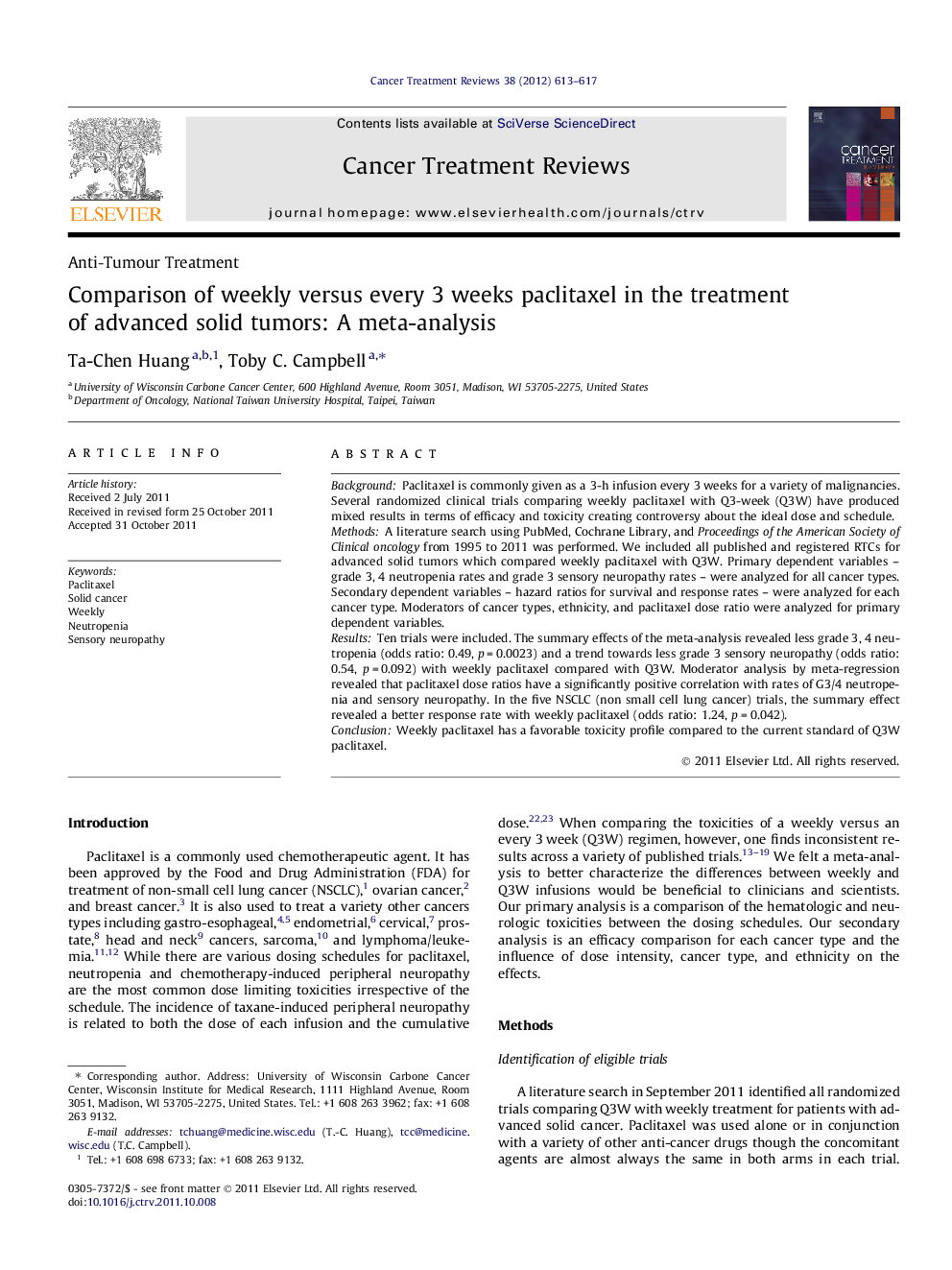| Article ID | Journal | Published Year | Pages | File Type |
|---|---|---|---|---|
| 3979926 | Cancer Treatment Reviews | 2012 | 5 Pages |
BackgroundPaclitaxel is commonly given as a 3-h infusion every 3 weeks for a variety of malignancies. Several randomized clinical trials comparing weekly paclitaxel with Q3-week (Q3W) have produced mixed results in terms of efficacy and toxicity creating controversy about the ideal dose and schedule.MethodsA literature search using PubMed, Cochrane Library, and Proceedings of the American Society of Clinical oncology from 1995 to 2011 was performed. We included all published and registered RTCs for advanced solid tumors which compared weekly paclitaxel with Q3W. Primary dependent variables – grade 3, 4 neutropenia rates and grade 3 sensory neuropathy rates – were analyzed for all cancer types. Secondary dependent variables – hazard ratios for survival and response rates – were analyzed for each cancer type. Moderators of cancer types, ethnicity, and paclitaxel dose ratio were analyzed for primary dependent variables.ResultsTen trials were included. The summary effects of the meta-analysis revealed less grade 3, 4 neutropenia (odds ratio: 0.49, p = 0.0023) and a trend towards less grade 3 sensory neuropathy (odds ratio: 0.54, p = 0.092) with weekly paclitaxel compared with Q3W. Moderator analysis by meta-regression revealed that paclitaxel dose ratios have a significantly positive correlation with rates of G3/4 neutropenia and sensory neuropathy. In the five NSCLC (non small cell lung cancer) trials, the summary effect revealed a better response rate with weekly paclitaxel (odds ratio: 1.24, p = 0.042).ConclusionWeekly paclitaxel has a favorable toxicity profile compared to the current standard of Q3W paclitaxel.
